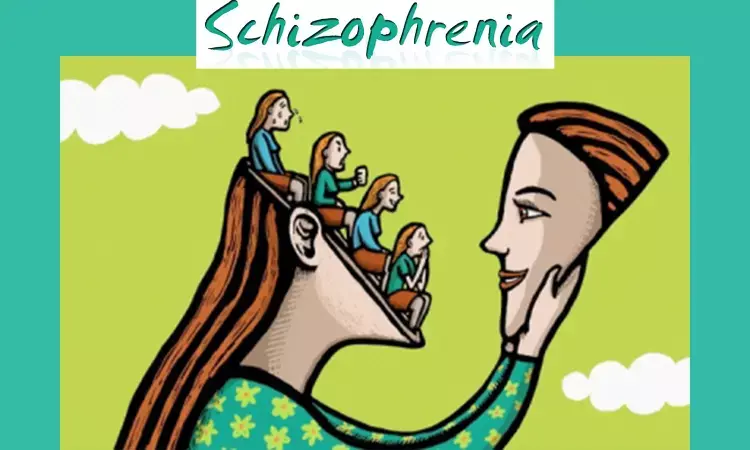- Home
- Medical news & Guidelines
- Anesthesiology
- Cardiology and CTVS
- Critical Care
- Dentistry
- Dermatology
- Diabetes and Endocrinology
- ENT
- Gastroenterology
- Medicine
- Nephrology
- Neurology
- Obstretics-Gynaecology
- Oncology
- Ophthalmology
- Orthopaedics
- Pediatrics-Neonatology
- Psychiatry
- Pulmonology
- Radiology
- Surgery
- Urology
- Laboratory Medicine
- Diet
- Nursing
- Paramedical
- Physiotherapy
- Health news
- Fact Check
- Bone Health Fact Check
- Brain Health Fact Check
- Cancer Related Fact Check
- Child Care Fact Check
- Dental and oral health fact check
- Diabetes and metabolic health fact check
- Diet and Nutrition Fact Check
- Eye and ENT Care Fact Check
- Fitness fact check
- Gut health fact check
- Heart health fact check
- Kidney health fact check
- Medical education fact check
- Men's health fact check
- Respiratory fact check
- Skin and hair care fact check
- Vaccine and Immunization fact check
- Women's health fact check
- AYUSH
- State News
- Andaman and Nicobar Islands
- Andhra Pradesh
- Arunachal Pradesh
- Assam
- Bihar
- Chandigarh
- Chattisgarh
- Dadra and Nagar Haveli
- Daman and Diu
- Delhi
- Goa
- Gujarat
- Haryana
- Himachal Pradesh
- Jammu & Kashmir
- Jharkhand
- Karnataka
- Kerala
- Ladakh
- Lakshadweep
- Madhya Pradesh
- Maharashtra
- Manipur
- Meghalaya
- Mizoram
- Nagaland
- Odisha
- Puducherry
- Punjab
- Rajasthan
- Sikkim
- Tamil Nadu
- Telangana
- Tripura
- Uttar Pradesh
- Uttrakhand
- West Bengal
- Medical Education
- Industry
Exposure to green space tied to lower risk of schizophrenia, study finds

Canada: High exposure to green space in city dwellers is linked to a significantly lower risk of schizophrenia versus counterparts who live in areas having little green space, says a recent study published in The Canadian Journal of Psychiatry. The study showed that people living in areas with lowest levels of green space were 24% more likey to develop schizophrenia.
Previous studies have shown an association between urbanicity and increased schizophrenia risk, however, the underlying mechanism behind this association is not clear. The study of novel environment factors has been an area of interest. A recent population-based study in Denmark showed that cumulative childhood exposure to green space is a protective factor that reduces schizophrenia risk during adolescence and adulthood.
Against the above background, Martine Rotenberg, Center for Addiction and Mental Health and the University of Toronto, Canada, and colleagues aimed to explore the association between green space and schizophrenia incidence in a large Canadian urban center after adjusting for known socioenvirnmental risk factors.
For this purpose, the researcher used a retrospective population-based cohort of 649,020 people aged between 14 years to 40 years from different neighborhoods in Toronto, Ontario. Using geospatial data of all public parks and green spaces in the city, green space was calculated, data drawn from Urban Health Equity Assessment and Response Tool.
Based on the study, the researchers reported the following findings:
- Over a 10-year period, 4841 participants were diagnosed with schizophrenia.
- Those who lived in neighborhoods with the least amount of green space were significantly more likely to develop schizophrenia than those who lived in areas with the most green space, even after adjusting for age, sex, and neighborhood-level marginalization (adjusted incidence rate ratio [IRR], 1.24).
- Schizophrenia risk was also elevated in men vs women (adjusted IRR, 1.59). Those living in areas with moderate amounts of green space did not have an increased schizophrenia risk.
"We found that independent of other sociodemographic and socioenvironmental factors, residing in areas with the lowest amount of green space was associated with an increased risk of developing schizophrenia," wrote the authors. "The underlying mechanism at play is not known and requires further study."
Reference:
Rotenberg M, Tuck A, Anderson KK, McKenzie K. Green Space and the Incidence of Schizophrenia in Toronto, Canada. The Canadian Journal of Psychiatry. 2022;67(3):238-240. doi:10.1177/07067437221076722
KEYWORDS: Canadian Journal of Psychiatry, schizophrenia, green space, environment, city dwellers, greenery, mental disorders, Martine Rotenberg, neighborhoods, socioenvironmental factors, sociodemographic factors
Dr Kamal Kant Kohli-MBBS, DTCD- a chest specialist with more than 30 years of practice and a flair for writing clinical articles, Dr Kamal Kant Kohli joined Medical Dialogues as a Chief Editor of Medical News. Besides writing articles, as an editor, he proofreads and verifies all the medical content published on Medical Dialogues including those coming from journals, studies,medical conferences,guidelines etc. Email: drkohli@medicaldialogues.in. Contact no. 011-43720751


